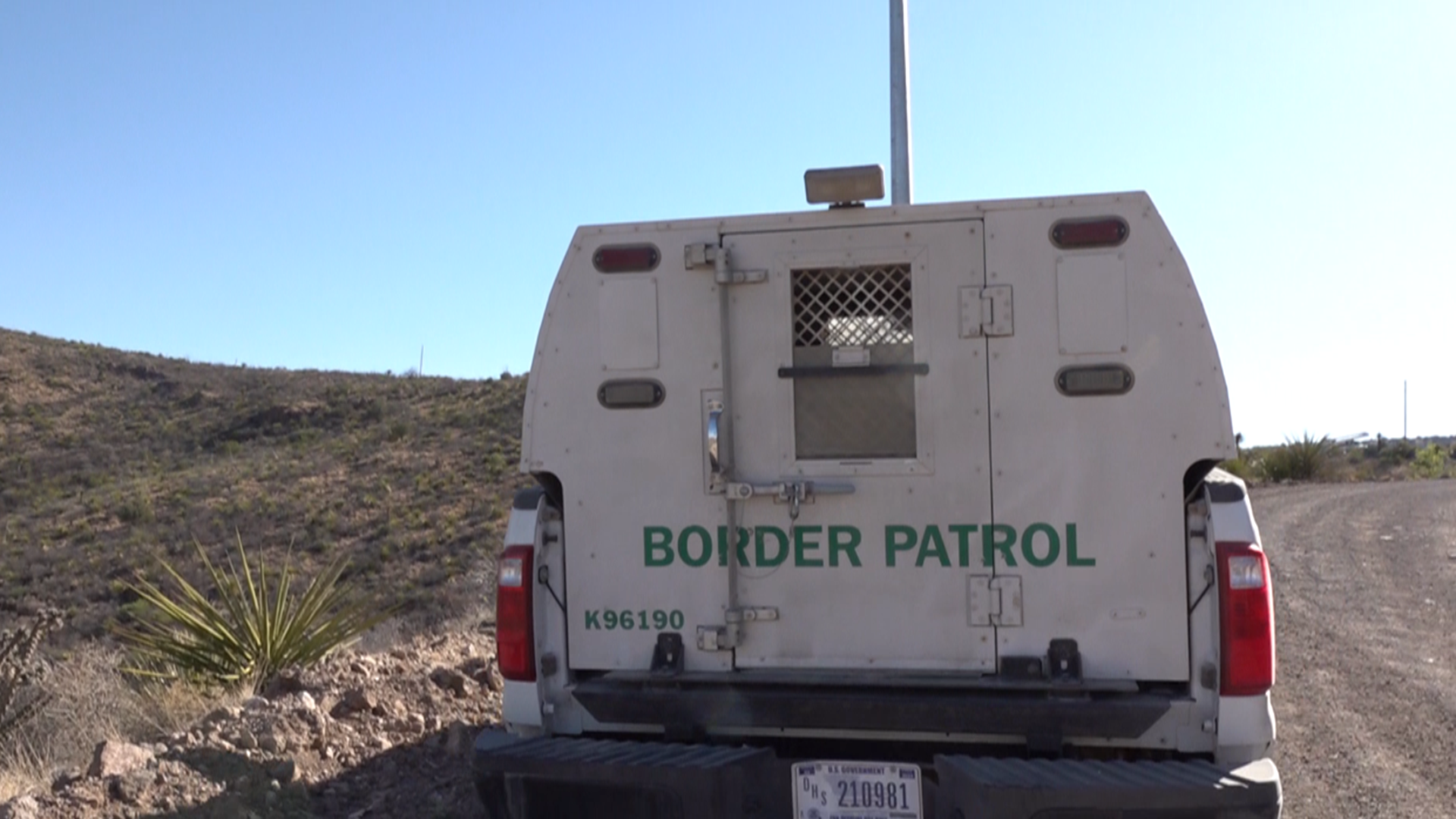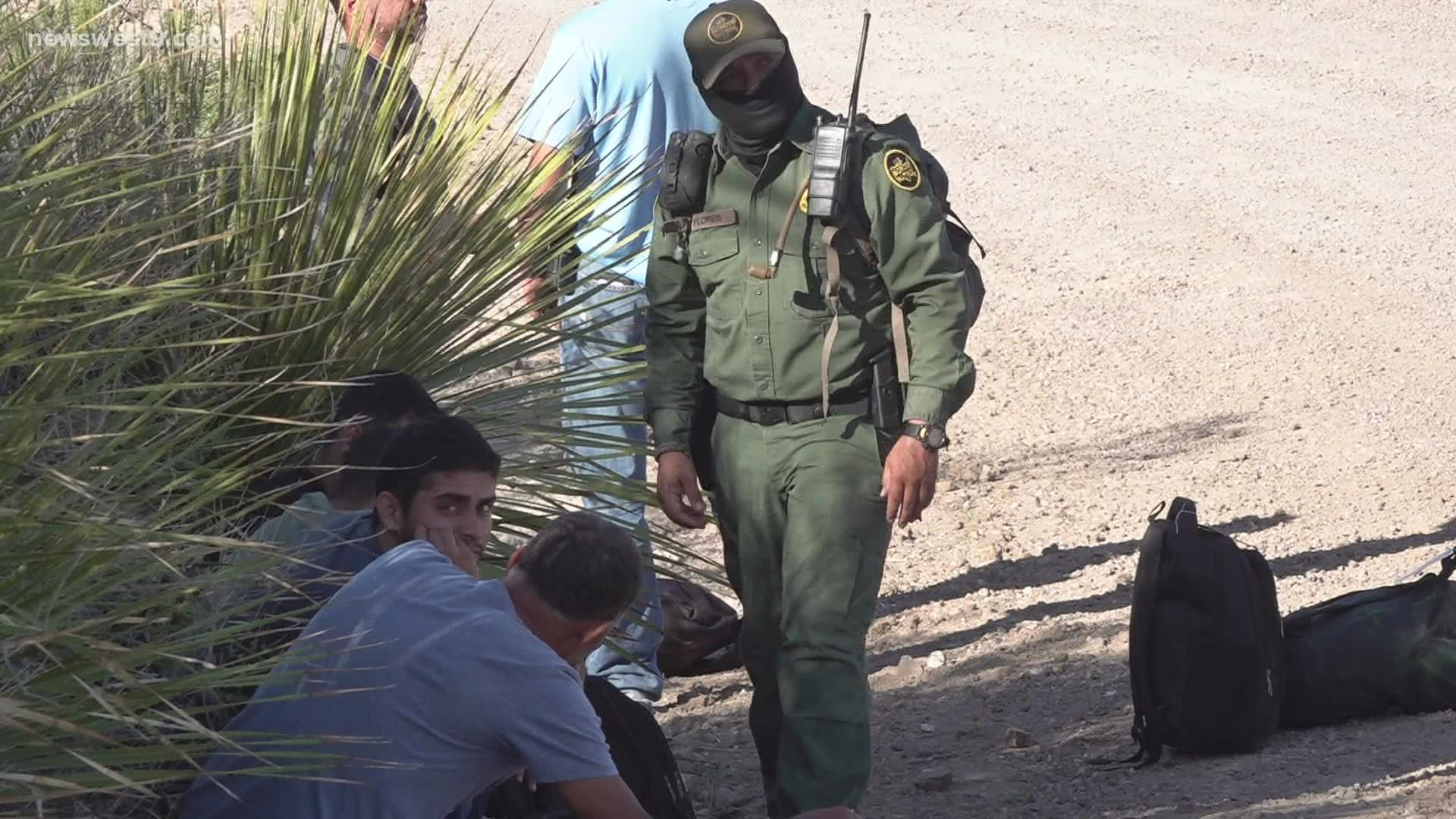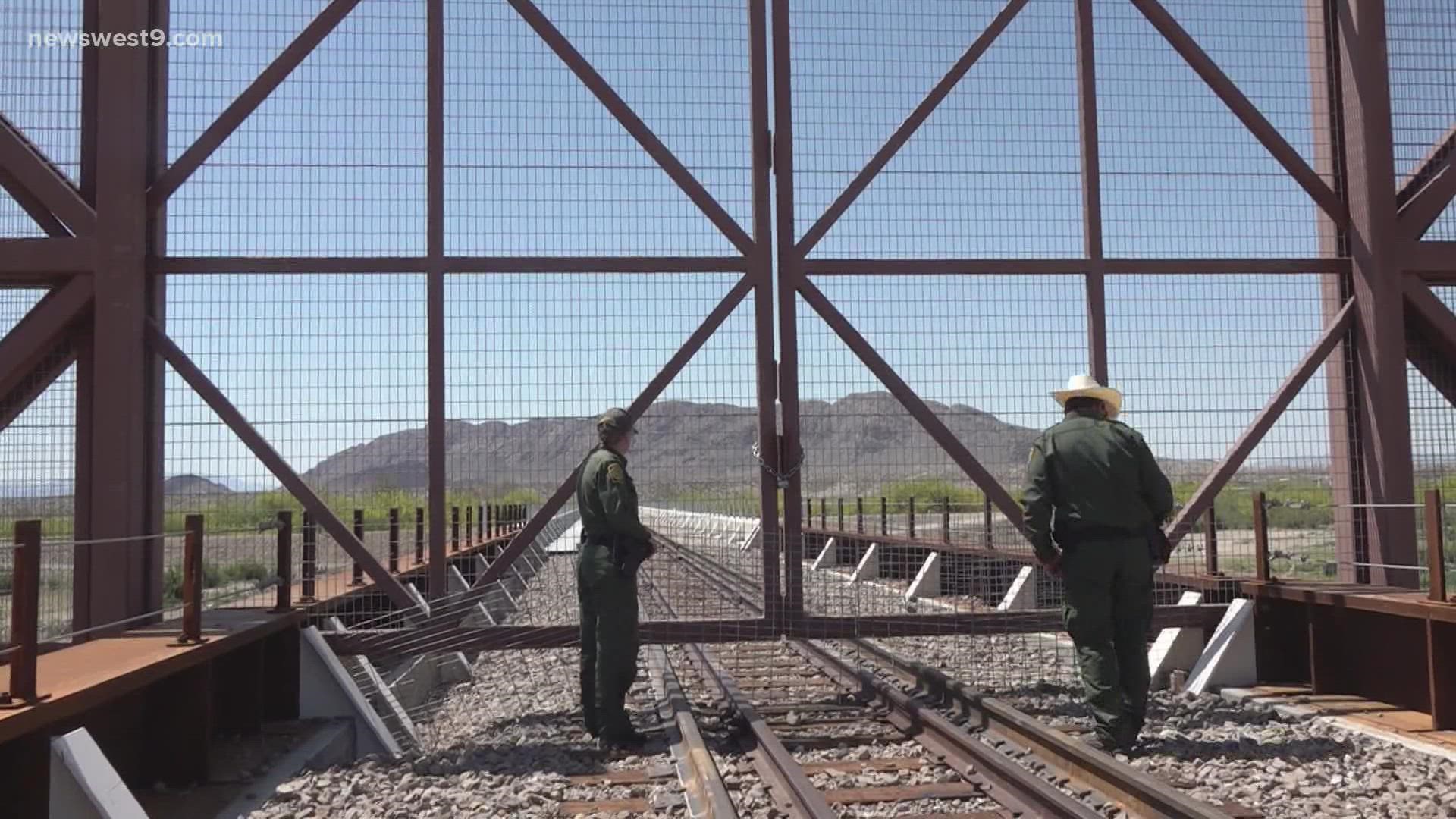Hiding in plain sight: West Texas stash houses
Since October 2020, 12 stash houses have been found in the Permian Basin.

Hiding in Plain Sight: Part 1 What is a stash house?
West Texas is filled with wide-open spaces, rich amounts of oil and a sky that looks like it can go on for just about forever.
But the land here also stretches over 500 miles along the U.S. Mexico border.
“We have seen an increase in people coming across the border and our apprehensions are up," Greg Davis, U.S. Customs and Border Protection public affairs liaison for the Big Bend Sector, said. "We have a lot of interaction all along the southwest border, not just the Big Bend sector but all the sectors that border Mexico.”
As of May this year, over 929,647 people have been apprehended at the border.
To put that number in perspective, in 2018 half that number, 521,000 people were apprehended.
With a record-high number of migrants coming into the United States, border protection is also seeing an influx in stash houses. A stash house is a home or building used to smuggle people or drugs.
“These individuals pay an amount to be smuggled into the U.S., the cartels smuggle them in," Victor Avila, retired ICE and Homeland Security Special Agent, said. "They transport them in tractor-trailers, pickup trucks in these awful conditions and they pack them in there and then get them to a facility."
The facility could be a house or warehouse. It is a place where they hold these individuals.
“The transnational criminal organizations are exploiting the opportunity of a more open border," Davis said. "They know our agents are limited out in the field and we can’t be everywhere, so when they do get folks through this is where a lot of them end up.”
Davis tells NewsWest 9 these transnational criminal organizations cartel members go into cities and villages across Mexico and Central America to recruit people, giving them a fake promise that for $11,000 dollars, they can get them to America.
"A lot of people that end up in stash houses have been exploited from the time they left their home country from the time they get there and even beyond," Davis said. "They are forced to pay a lot of money in many cases and once they get there they are often kept in hard and unsanitary conditions that can expose them to danger.”
These traffickers, or as the agents refer to them, coyotes, have little to no regard for how these migrants are treated.
"Sexual exploitation happens when they come across, they may be extorted for additional money," Davis said. "If they can’t come up with the money…or they are captured and returned and they still owe the organization money, well they may force them to become the drug mule."
Avila tells us the conditions at these stash houses is inhumane.
"They’re in horrific conditions, there’s no air conditioning, there’s no food, there’s no water," Avila said. "They just hold them there like a commodity, and they stash them there until they distribute them to the rest of the country... they’re going everywhere in our country.”
12 stash houses have been taken down in the Big Bend sector since October.
While Customs and Border Protection officers can not disclose the specific addresses of stash houses, they can tell us they have found stash houses in Presidio, Midland and Ector County.
Sheriff Mike Griffis in Ector County witnessed first-hand the work of human smugglers.
“We did have a house out in west Odessa we assisted Border Patrol and Homeland Security on," Griffis said. "Entering that residency we did find several individuals in there...the individuals who were in charge of the location were arrested. And you know I’m sure there’s probably more of them”
As for who’s in these stash houses? It varies.
“We don’t know who they are, they might just be economic migrants, people who just want to come over to work," Avila said. "But on the other side of the token....there could be individuals there that are wanted for crimes, prior deports, felons. We could have individuals from special interest countries that are here that have terrorism links to them.”
Griffis, Davis and Avila believe not enough people understand how stash houses and issues relating to the border… are right here in our own backyard.
“Midland and Odessa are very close to the border transportation-wise," Davis said. "It only takes a few hours to get a vehicle up to Midland and Odessa... blend into the city, and take people to a stash house or wherever they are going to take them so it’s something to be very aware of.”
We reached out to Midland Police who helped assist the stash house bust earlier this year. They declined an interview.
Hiding in Plain Sight: Part 2 How do stash homes get purchased?
Local lawmen are finding more and more stash houses. These are homes or buildings where coyotes or cartel members are hiding desperate migrants and making demands for their release.
So how are these criminals able to get a house without being flagged by local law enforcement?
The answer like everything related to the border: complicated.
“Stash houses are generally a house or a building where transnational criminal organizations will consolidate people until they get a massive amount and then they can move to a tractor-trailer or some other manner exponentially and efficiently," Davis said.
Since October, there have been 12 stash houses found across the Permian Basin.
“It’s scary to know there’s stash houses are here," Debbi Hays, Ector County Judge, said. "But what’s more scary, if there’s one there’s two, if there’s two there’s ten, and we all know how large west Odessa is."
Retired ICE and Homeland Security Special Agent Victor Avila knows a thing or two about stash houses. He spent years chasing down cartel members and putting them behind bars.
"When these migrants come to Mexico, they are as good as being in the United States because of the corruption and the lack of law enforcement in the country," Avila said. "The corruption that exists there, you will come through Mexico and be encountered by the cartels...if you want to come in illegally."
Avila says the cartel does not care how migrants get across the border or if they get caught by border protection.
"They don’t care, they’re going to get paid if you come through their territory... which their territory is the entire country of Mexico," Avila said. "That is the issue."
Avila tells us the cartels not only exist in the southern United States but in the northern part of the country.
But how can these criminals purchase a home in the US to stash migrants?
“The cartels, it's a multi-billion dollar industry," Avila said. "They purchase not homes, they purchase land, they purchase ranches.”
To CBP, dealing with the cartel is like dealing with a highly sophisticated criminal organization.
"I want you to think Amazon when you think of a cartel...that’s how sophisticated they are with their intelligence, organization, hierarchy. Their weapons," Avila said. "They are something to be reckoned with.”
The paper trail for buying or renting stash houses often can not be linked back to the cartel or coyotes.
“The issue is not the paper trail of who owns it, it’ll be under someone’s name," Avila said. "It’ll be easy to find that information...it’s just not easily linked to the organization."
Avila says the home might be owned by someone who is completely clean with no criminal history.
"They used their information to purchase their home under their name," Avila said.
Customs and Border Protection agents try to eliminate as many stash houses from the our area as they can.
"So we try to do all we can to do all we can so those stash houses are removed and prosecutions follow for the people who are facilitating that,” Davis said.
But prosecuting those behind the crime is tricky.
“It’s very hard to prosecute unless the agents are able to identify a smuggler, a guide, someone in charge of those people," Avila said. " Even though you might get a couple of witnesses to become material witnesses... it is very difficult if you don’t have that identifier or that person who drove them there. The one that was looking out for them."
While prosecuting those behind stash houses may be difficult…local leaders believe stricter border policies would limit the cartel's power in the Basin, making it harder for them to purchase stash houses and traffic migrants.
“It’s getting to a point where it is out of control," Midland Mayor Patrick Payton said. "Hopefully what will happen in the weeks and months ahead is the rest of the states in this country will realize this is happening...it’s migrating past what’s happened in the southern parts of the county...migrants are moving all over that are connected to the cartels.”
For the Ector County Sheriff, the country needs to protect itself.
"When you go home at night you lock your front door, you lock your back door...and that’s the same situation at the border," Griffis said. "We need to lock our door and make sure we need to who’s walking into our house. You’re not going to let just anybody and everybody walk into your home, so we need to know who’s coming across.”
Hiding in Plain Sight: Part 3 How to report stash houses?
Since October, the Big Bend Sector of Customs and Border Protection has busted 12 stash houses, some of those in Midland and Odessa.
"We have more homes with human trafficking, with stash houses, with drug cartels moving in," Hays said. "Our crime rate has increased because of what is happening along the border and what’s really scary is you could live across the street from someone involved in these illegal activities and not even know it.”
In June, more than 180-thousand migrants were apprehended at the border, the most migrants to cross the border in a single month this year.
"There are people who are trying to immigrate to this county for safety, security and lifestyle...there’s another group that’s being taken advantage of by the cartels and being abused by this process and also sex trafficked by this process," Payton said. "Let’s be careful that we do not throw every immigrant under the bus on this thing...what we’re dealing with is a highly sophisticated drug cartel network.”
As for why the migrants in these stash houses, who are being held against their own will, do not try to escape or report what is happening?
Well, it comes down to fear.
"These people are reluctant to come forward but they are being taken advantage of by these individuals," Griffis said. "It really takes a lot of resources to target that kind of crime. You need to have designated officers for that crime itself to dig into it and make a good case."
Stopping the cartel’s network is up to homeland security investigations specialized units.
We asked Customs and Border Protection agents for the exact resources they use to stop these stash houses, in fear that they might compromise current investigations. They did not share details, but they did tell us this:
"Without getting into the very specifics...a lot of information comes from the public," Davis said.
According to agents, if there is suspicious activity that you believe might be related to stash houses it should be reported to local law enforcement, either the police or sheriff’s office.
“If you see something say something, the signs are there, you just have to pay a little attention," Avila said. "The windows are covered, very little traffic or a lot of traffic, the conditions on the outside of the home are not kept up well."
Avila says the people in the community are the best people to know when something is up.
“Oftentimes, the people are moved through the use of vans, cargo vans, the organizations use those types of vehicles," Davis said. "So if they suddenly start to see a whole lot of vans in their neighborhoods so that’s a good indicator.”
Contacting local law enforcement is the first step.
From there, federal agencies take over the investigation.
"If someone reports it this will have the authority to go in there and do a welfare check," Avila said. "At that point, you have enough probable cause, they will go in and find out if it is a stash house and they will then take care of it.”
According to Customs and Border Protection, most of the migrants at these stash houses are thankful because being in U.S. Border Protection custody is safer than being held against your own will.
“A lot of the people are relieved when they have been removed from those situations because many of them did not ever anticipate being in a stash or sign up for anything like that," Davis said. "They are at the mercy of the cartel.”
To report suspicious cartel activity, or anything related to stash houses there are anonymous tip lines set up with Homeland Security Investigations and Customs and Border Protection. Click here.



